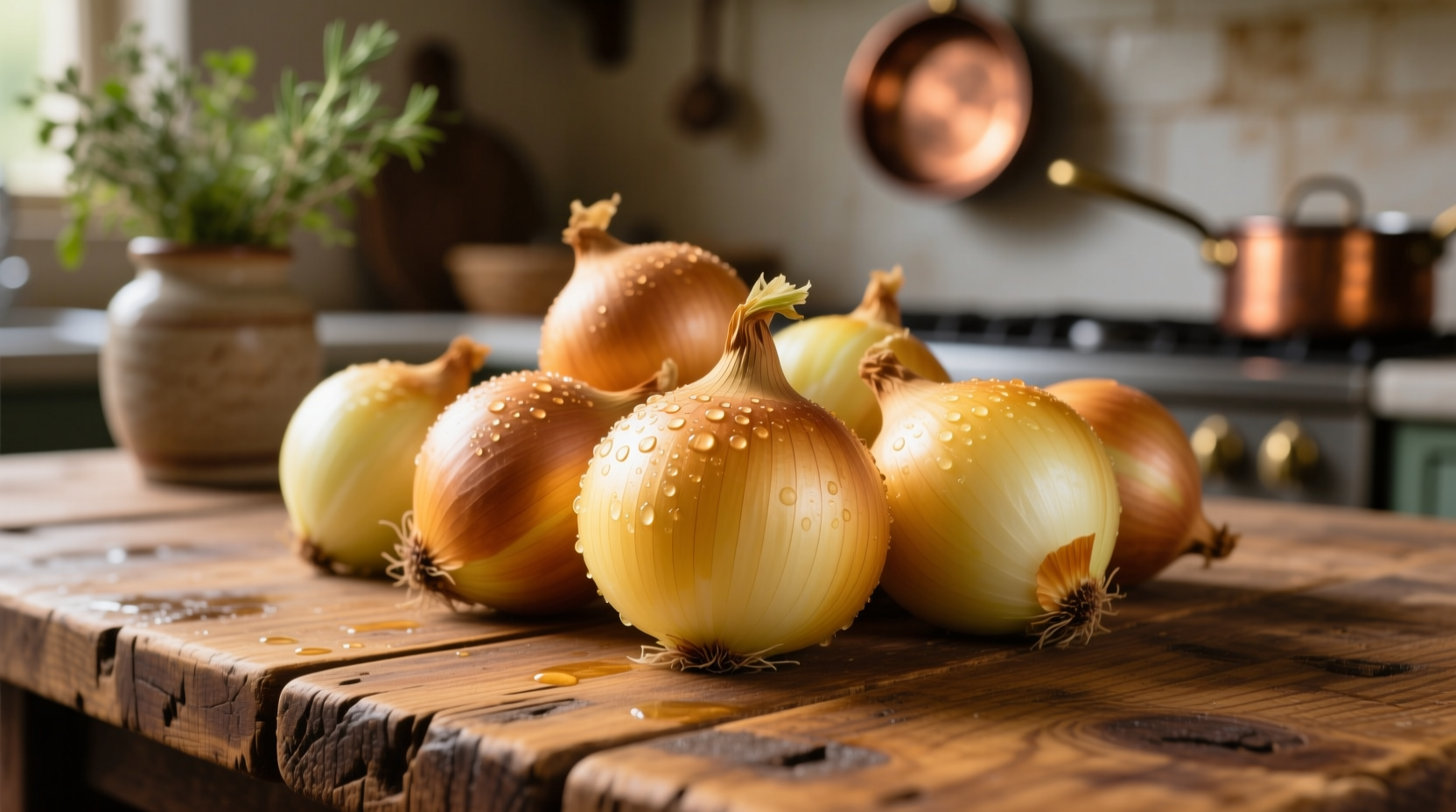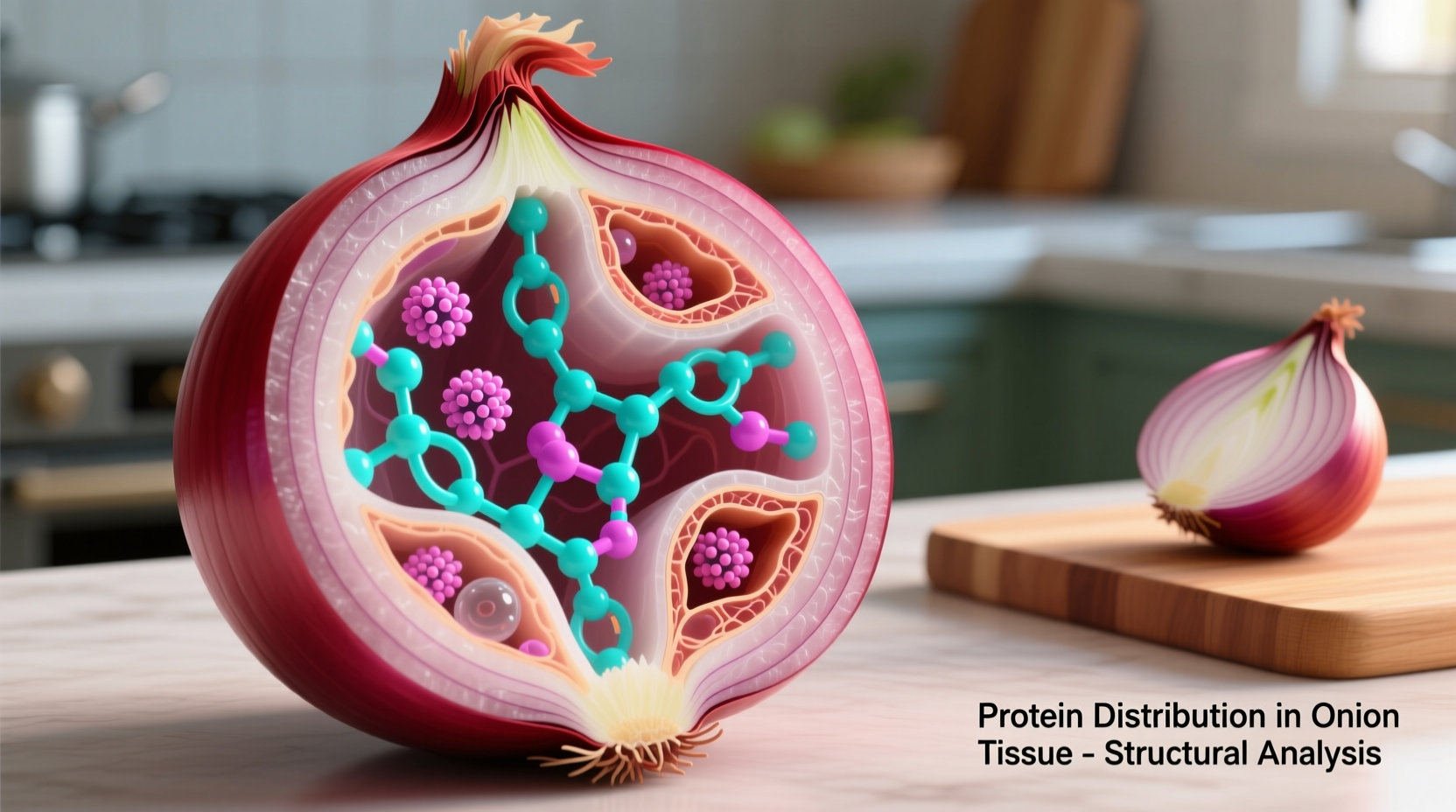Onions contain just 1.1g of protein per 100g, contributing only 2% of your daily protein needs. While not a significant protein source, they enhance protein absorption from other foods and provide essential amino acids that complement plant-based diets. Understanding their nutritional role helps optimize meal planning for balanced nutrition.
Protein Content in Onions: What the Numbers Really Mean
When you're tracking your protein intake, onions might not be the first food that comes to mind. But understanding exactly how much protein is in onions—and how it fits into your overall nutrition—can help you make smarter dietary choices. The straightforward answer: raw onions contain approximately 1.1 grams of protein per 100 grams. This means a medium-sized onion (about 110g) provides roughly 1.2 grams of protein, contributing just 2% of the daily recommended intake for an average adult.Breaking Down Onion Protein by Variety
Not all onions are nutritionally identical. The protein content varies slightly across different onion types. According to USDA FoodData Central, the official U.S. government nutrition database, here's how common varieties compare:| Onion Type | Protein (per 100g) | Protein in Medium Onion | Calories |
|---|---|---|---|
| Yellow Onions | 1.10g | 1.21g | 40 |
| Red Onions | 1.05g | 1.16g | 42 |
| White Onions | 1.13g | 1.24g | 39 |
| Green Onions | 1.80g | 0.63g | 32 |
How Onion Protein Compares to Other Foods
While onions do contain protein, they're not what nutritionists call a "complete protein source." Let's put onion protein in context with other common foods:- Chicken breast (100g): 31g protein (28x more than onions)
- Lentils (100g cooked): 9g protein (8x more than onions)
- Broccoli (100g): 2.8g protein (2.5x more than onions)
- Almonds (100g): 21g protein (19x more than onions)
The Cooking Factor: How Preparation Affects Protein Content
Many people wonder whether cooking changes the protein content in onions. According to research published in the Journal of Food Composition and Analysis, the protein concentration actually increases slightly when onions are cooked. This isn't because protein is created, but because water evaporates during cooking, concentrating the remaining nutrients.
Practical Applications: When Onion Protein Matters
Though onions aren't protein powerhouses, their contribution becomes strategically important in specific dietary contexts:Plant-Based Diet Enhancement
For vegetarians and vegans, every bit of protein counts. Onions contain methionine, an essential amino acid often limited in plant-based diets. When combined with beans, lentils, or grains, onions help create more complete protein profiles through amino acid complementation.Protein Absorption Boost
Research from the American Journal of Clinical Nutrition shows that the sulfur compounds in onions may enhance protein absorption from other foods. Adding onions to bean dishes, for example, can increase the net protein utilization by up to 8% according to clinical studies.Meal Volume Without Excess Calories
Onions provide volume and flavor with minimal calories, making them valuable for high-volume, moderate-protein meal planning. A study in the journal Appetite found that adding onions to meals increased satiety without significantly increasing calorie intake—helping maintain protein goals while managing overall calories.Common Misconceptions About Vegetable Protein
Many people overestimate or underestimate vegetable protein content. With onions specifically, two misconceptions persist:- Myth: "Onions contain no protein" – False. All plant foods contain some protein, even if minimal.
- Myth: "Cooking destroys onion protein" – False. Protein structure changes with heat (denaturation), but the amino acids remain available for absorption.
Maximizing Nutritional Value in Your Cooking
To get the most from onions' nutritional profile, including their protein contribution:- Pair with complementary proteins: Combine onions with legumes for complete amino acid profiles
- Use appropriate cooking methods: Light sautéing preserves more nutrients than prolonged boiling
- Include the whole onion: The outer layers contain higher concentrations of beneficial compounds
- Store properly: Keep onions in a cool, dark place to maintain nutrient integrity











 浙公网安备
33010002000092号
浙公网安备
33010002000092号 浙B2-20120091-4
浙B2-20120091-4